


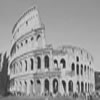 COLOSSEUM
COLOSSEUM
The Colosseum or Roman Coliseum, originally the Flavian Amphitheatre (Latin: Amphitheatrum Flavium, Italian Anfiteatro Flavio or Colosseo), is an elliptical amphitheatre in the center of the city of Rome, Italy, the largest ever built in the Roman Empire. It is one of the greatest works of Roman architecture and Roman engineering.
Occupying a site just east of the Roman Forum, its construction started between 70 and 72 AD under the emperor Vespasian and was completedin 80 AD under Titus, with further modifications being made during Domitian's reign (81-96)
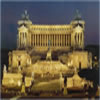 PIAZZA VENEZIA
PIAZZA VENEZIA
PThe Piazza Venezia is a piazza in central Rome. It takes its name from the adjacent Palazzo Venezia.
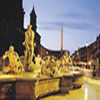 PIAZZA NAVONA
PIAZZA NAVONA
Piazza Navona is a city square in Rome, Italy. It follows the plan of an ancient Roman circus, the 1st century Stadium of Domitian, where the Romans came to watch the agones ("games"): It was known as 'Circus Agonalis' (competition arena). It is believed that over time the name changed to 'in agone' to 'navone' and eventually to 'navona'.
Defined as a public space in the last years of 15th century, when the city market was transferred to it from the Campidoglio, the Piazza Navona is now the pride of Baroque Roman art history. It features sculptural and architectural creations by Gian Lorenzo Bernini, whose famous Fontana dei Quattro Fiumi (Fountain of the Four Rivers, 1651) stands in the center; by Francesco Borromini and Girolamo Rainaldi, who designed the church of Sant'Agnese in Agone; and by Pietro da Cortona, who painted the galleria in the Pamphilj palace.
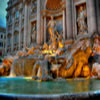 TREVI FOUNTAIN
TREVI FOUNTAIN
The Trevi Fountain is a fountain in the Trevi rione in Rome, Italy. Standing 25.9 meters (85 feet) high and 19.8 meters (65 feet) wide, it is the largest Baroque fountain in the city.In 1629 Pope Urban VIII, finding the earlier fountain insufficiently dramatic, asked Gian Lorenzo Bernini to sketch possible renovations, but when the Pope died, the project was abandoned. Bernini's lasting contribution was to resite the fountain from the other side of the square to face the Quirinal Palace (so the Pope could look down and enjoy it). Though Bernini's project was torn down for Salvi's fountain, there are many Bernini touches in the fountain as it was built.
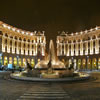 PIAZZA DELLA REPUBBLICA
PIAZZA DELLA REPUBBLICA
PSquare of the Republic, until the Olympics in Rome in 1960 Esedra square (as it is still known locally) is a square in Rome located a few hundred meters from the Termini railway station, in front of the Baths of Diocletian. From the square one of the fundamental ways of the city, Via Nazionale. The ancient name of the square, still very common today, originates from the large exedra of the Roman baths, the perimeter of which is traced by the semicircular colonnade of the square. The arcades that adorn the square were built in the memory of its ancient buildings that stood there: the colonnaded buildings, dating back to 1887-1898 are by Gaetano Koch. On the square facing the Basilica of St. Mary of the Angels and Martyrs, converted from a wing of the imperial baths in Rome: Michelangelo tepidarium he obtained from the wing to the large church with a Greek cross.
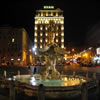 PIAZZA BARBERINI
PIAZZA BARBERINI
Barberini Square is a square in Rome situated in between the Quirinal Hill , and the Gardens of Sallust , takes its name from the Palazzo Barberini that there faces , although the entrance of the building, finished building in 1625 commissioned by Cardinal Francesco Barberini , is located in Via delle Four Fontane.Al center of the square stands the Fontana del Tritone by Gian Lorenzo Bernini in 1643 , commissioned by Pope Urban VIII Barberini.La fountain, for many one of the most beautiful in Rome , was built in travertine and has, between the tails of the four dolphins support the newt , two coats of arms of Barberini.Da this square , starting from the fountain , until the eighteenth century was leaving the wagon that carried in procession disfigured corpses found , to put them on display in the busiest spots in the city , so that they could recognize the identity . The Triton Fountain On the corner of Via Veneto is the Fountain of the Bees , the animal symbol of the Barberini .The square is also famous because it was here branches off Via Veneto, the street made famous by the movie La Dolce Vita
 PANTHEON
PANTHEON
The Pantheon is a building in Rome, originally built by Marcus Agrippa as a temple to all the gods of Ancient Rome, and rebuilt in the early 2nd century AD. The intended degree of inclusiveness of this dedication is debated. The generic term pantheon is now applied to a monument in which illustrious dead are buried. It is one of the best preserved of all Roman buildings. It has been in continuous use throughout its history. Since the 7th century, the Pantheon has been used as a Roman Catholic church dedicated to "St. Mary and the Martyrs".